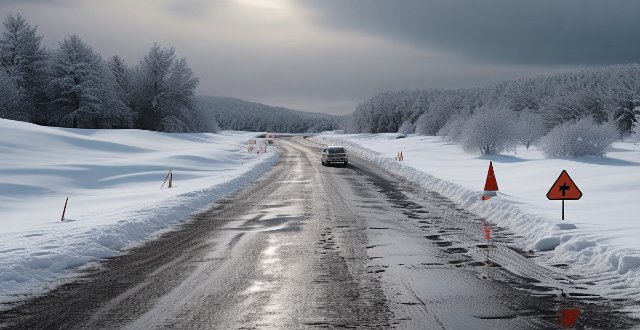Weather conditions significantly impact traffic safety, with adverse weather increasing the risk of accidents. Understanding how different weather conditions affect driving abilities and taking necessary precautions are essential for ensuring safety. Rain, snow, ice, fog, and wind all pose unique challenges to drivers, such as reduced visibility and slippery roads. To drive safely in these conditions, maintain vehicle readiness through regular maintenance and adjust driving habits by slowing down and increasing following distance. Additionally, being prepared for emergencies with an emergency kit and planning your route can further enhance safety. By prioritizing safety and adapting to weather conditions, drivers can significantly reduce the likelihood of accidents and ensure safer journeys for everyone on the road.

How Weather Affects Traffic Safety
Introduction to Weather and Traffic Safety
Weather conditions play a crucial role in traffic safety. Adverse weather can significantly increase the risk of accidents, leading to injuries and fatalities on roads worldwide. It's essential for drivers to understand how different weather conditions affect their driving abilities and take necessary precautions to ensure safety.
Effects of Various Weather Conditions on Road Safety
Rain
- Reduced Visibility: Rain reduces visibility, making it difficult for drivers to see the road and other vehicles clearly. This can lead to rear-end collisions or vehicles running off the road.
- Wet Road Surfaces: Wet roads are slippery, reducing tire grip and increasing stopping distances. Hydroplaning can occur, where the tires lose contact with the road surface, causing loss of control.
Snow and Ice
- Slippery Roads: Snow and ice make roads extremely slippery, increasing the risk of skidding and losing control of the vehicle.
- Reduced Visibility: Heavy snowfall can significantly reduce visibility, making it difficult for drivers to navigate safely.
- Buildup of Snow on Vehicles: Snow accumulation on windshields and windows can obstruct the driver's view, requiring frequent cleaning.
Fog
- Severely Reduced Visibility: Fog drastically reduces visibility, making it challenging for drivers to see beyond a short distance ahead. This can lead to multiple-vehicle pileups if drivers cannot react quickly enough.
- Condensation on Windows: Fog causes condensation on vehicle windows, impairing visibility unless promptly cleared.
Wind
- Crosswinds: Strong crosswinds can make handling a vehicle difficult, especially for high-sided vehicles like trucks and buses. They can also blow debris onto the road, creating hazardous driving conditions.
- Reduced Vehicle Control: High winds can reduce a driver's ability to control the vehicle, increasing the risk of accidents.
Precautions for Safe Driving in Adverse Weather Conditions
Maintain Vehicle Readiness
- Regular Maintenance: Ensure that your vehicle is regularly serviced, with particular attention to brakes, tires, and lights.
- Tire Pressure and Tread: Check tire pressure and tread depth regularly to maintain good grip on wet or icy roads.
Adjust Driving Habits
- Slow Down: Reduce your speed in adverse weather conditions to allow for increased stopping distances and better control.
- Increase Following Distance: Leave more space between your vehicle and the one in front to account for sudden stops or skids.
- Use Lights: Turn on headlights in low visibility conditions to increase your visibility to other drivers.
Be Prepared for Emergencies
- Carry Emergency Supplies: Keep an emergency kit in your vehicle, including blankets, flashlights, and first aid supplies.
- Plan Your Route: Check weather forecasts and road conditions before setting out, planning alternative routes if necessary.
Conclusion
Understanding how weather affects traffic safety is crucial for all drivers. By being aware of the risks associated with various weather conditions and taking appropriate precautions, drivers can significantly reduce the likelihood of accidents and ensure safer journeys for everyone on the road. Always remember, safety should be the top priority when driving in adverse weather conditions.